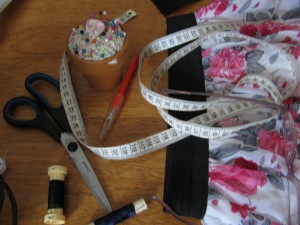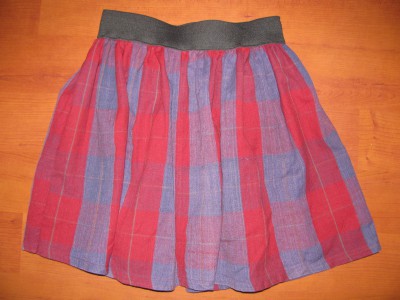For a country of 23 million people, Australia is the 2nd largest consumer of textiles per person in the world. A shameful stat. Almost half of Australians believe our country might actually rank between 6th – 12th in terms of textile consumption.
Fast fashion in Australia has become an addiction fuelled by cheap imported clothing manufactured in Third World countries or China. Multi-nationals produce so much clothing at such low prices even workers on the minimum wage could afford to change up their wardrobe as often as they might check their email inbox.
Rather than support companies exploring child labour or textile workers who are similar to contemporary slaves earning pitiful amounts for long hours of work, I would much prefer to support more ethically conscious industries and those that are environmentally aware.

Disposal of Used Textiles in Australia
1 in 3 garments produced ends up in landfill – unsold!
Citizen Wolfe – Australia
The donations of used clothing does not prevent textiles from entering landfill. Despite 83% of Australians donating unwanted or damaged clothes to charity, 14% of those charity donations end up in landfills.
For every 1 kg of used textiles that are diverted from landfill, 3-4 kg of greenhouse gases may be prevented from entering the atmosphere.
This year I have been working hard to reduce, recycle and re-use. The mantra for the 21st century.
I send my used textiles to a company that purposefully recycles them – e.g. Upparel which has to date diverted 731,137 kg of textile waste preventing 2,924,548 kg of gases.
I refuse to buy cheap t-shirts that lose their shape after two washes, even if they are cheaper than buying a salad sandwich. I refuse to buy new t-shirts at all now.
I question new clothing purchases:
- Do I really need another cheap cardigan in another colour?
- Another pair of leggings for yoga?
- Newer Sweatpants that aren’t covered in ‘piling’?
The answer is NO. I don’t.

100 Day Challenge Wearing Merino Wool
For the past 47 days, I’ve been participating in a dress challenge at the company called Wooland.com – that is, I have committed to wearing the same merino wool dress (washing it overnight every few days of course), for 100 consecutive days. Being odour-resistant, quick-drying and comfy, it has not been a problem to wash it overnight, to change up my outfits around the dress, layering under or over it as needs and weather dictates.
I am so happy with this purchase that I hope will last me many years.
In developing new combinations of existing clothes, I find I haven’t doubled up on any combinations so far, using different tops, cardis and jumpers to prevent repetition.
That is, I have not worn the same outfit combination with the dress twice. This keeps my interest level in the challenge. ie. I have not become bored with wearing the dress and I really like the creative aspect with accessories, but it does present a problem.
This challenge had made me acutely aware of how many clothes are in my existing wardrobe. The challenge screams at me that I have way too many clothes for what I need. This is indulgent and not environmentally friendly or ethical.
I think I hear murmuring in agreement.
Capsule Wardrobes
Admittedly, certain clothes do get a good run with me. One shirt in my wardrobe is over ten years old and another is almost 17 years old. I tend to buy timeless, durable pieces, not trending high fashion that quickly dates. But… even so, I could get away with much much less.
Instead of chucking out half my items to create a smaller capsule wardrobe, which would contribute to landfills, I want to find an alternative that is more environmentally friendly.
A Second Life for Old Clothing
I intend to re-use unwanted fabrics to
- Make new items from old – cutting down a maxi skirt to a mini skirt or tank top
- Making a rag rug or quilts from scraps
- Taking the fabric/scraps to a sewing group to make free recycled bags for the community to replace plastics
- Making t-shirt yarn from older stretched t-shirts
- Using excess textiles as paint or cleaning rags instead of buying paper towel and chux
- Re-purposing unwanted clothes for little children or babies
- Making dog coats or bandanas for fur-babies
- Offering to friends or relatives who might wear them
- Upcycle via a textile recycling program at Zara, H&M etc.
What do you do with your unwanted clothes and textiles?
Have you got an idea on how to re-use or re-purpose them?















